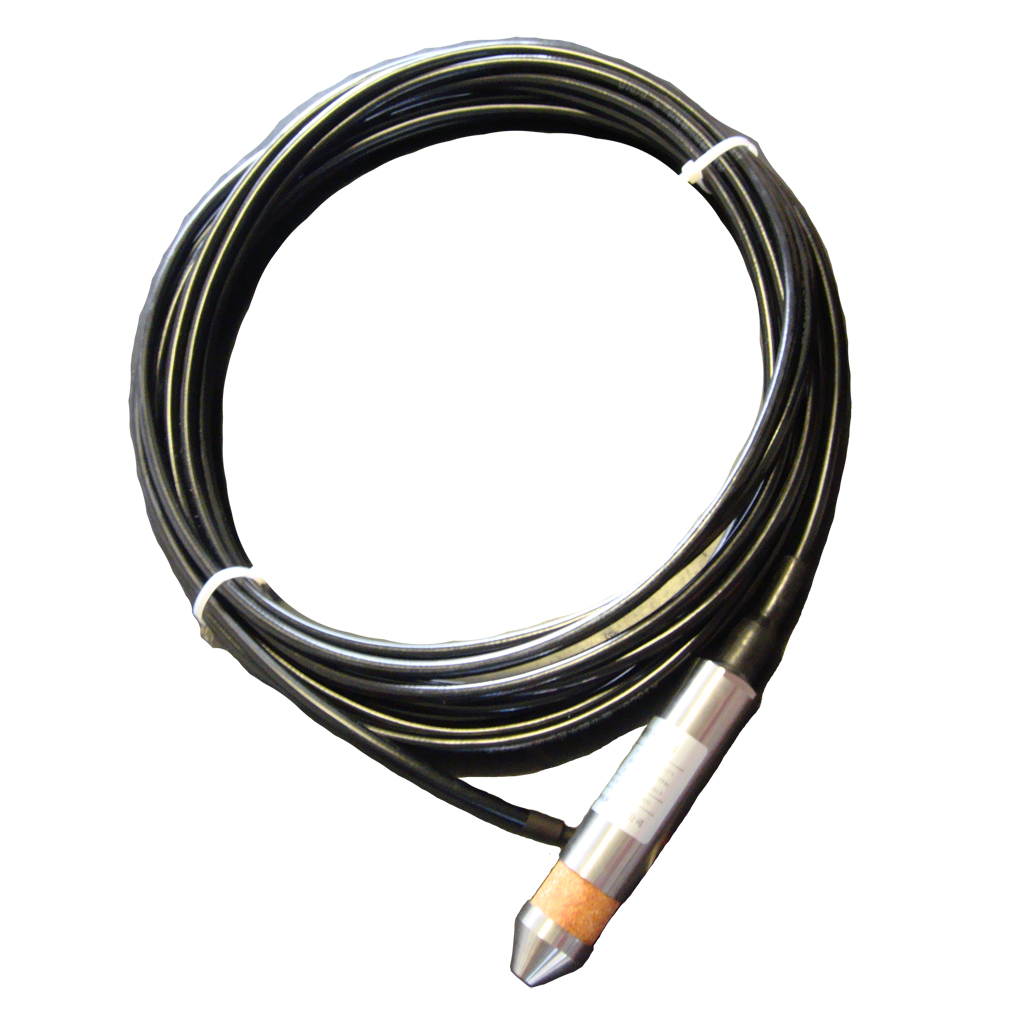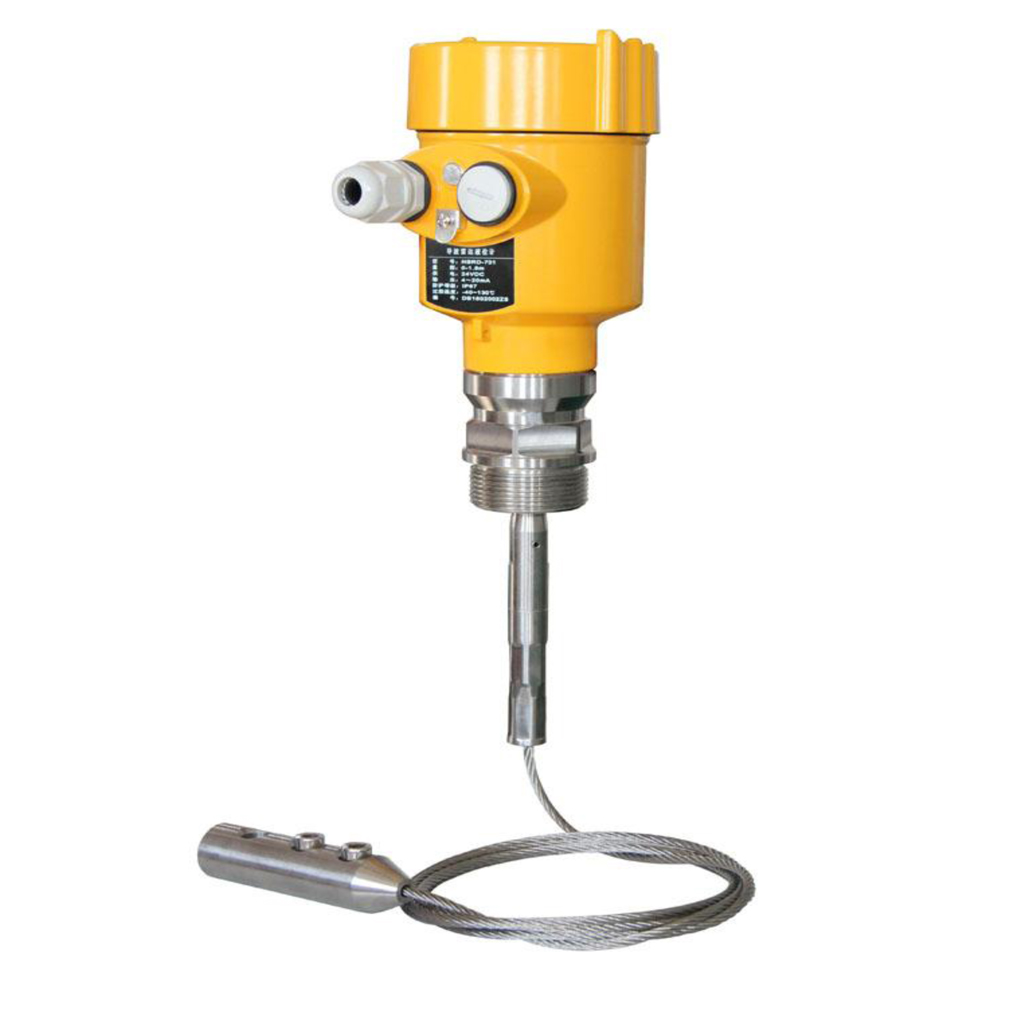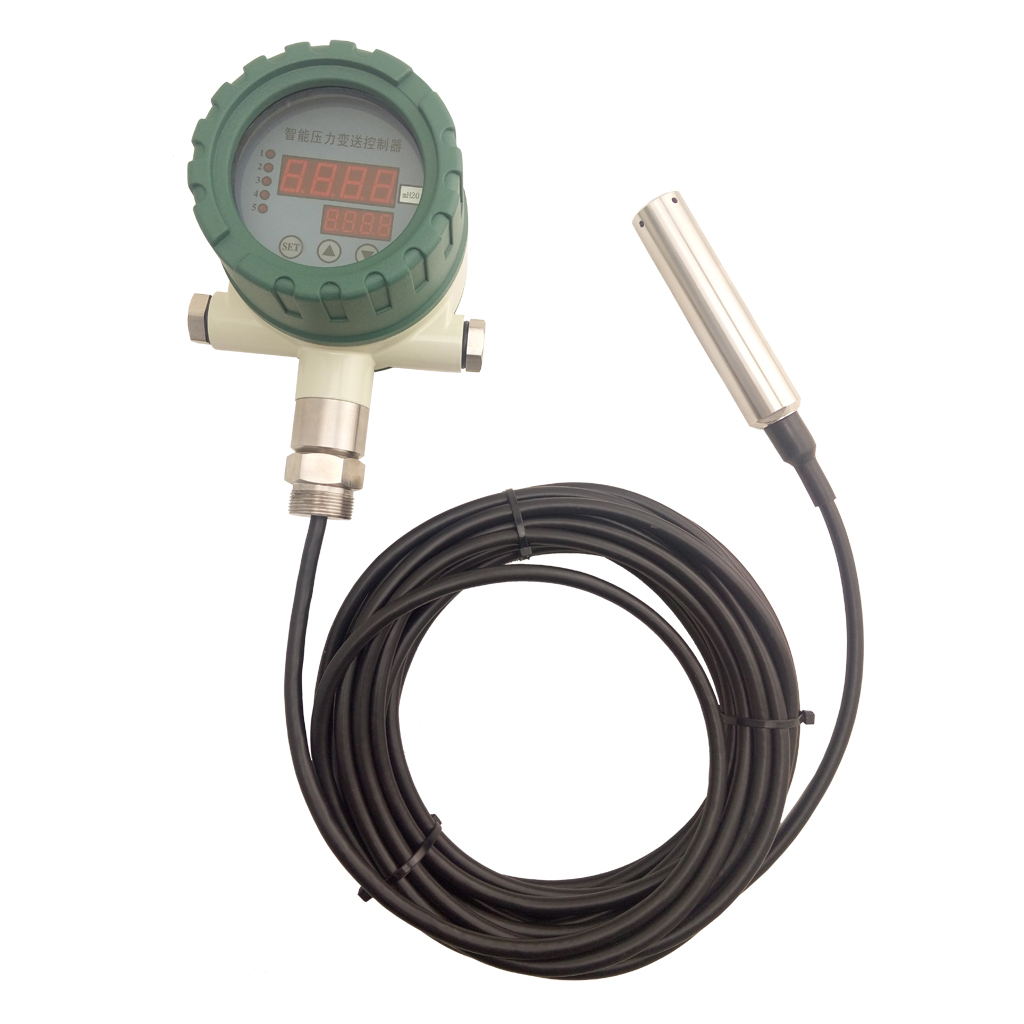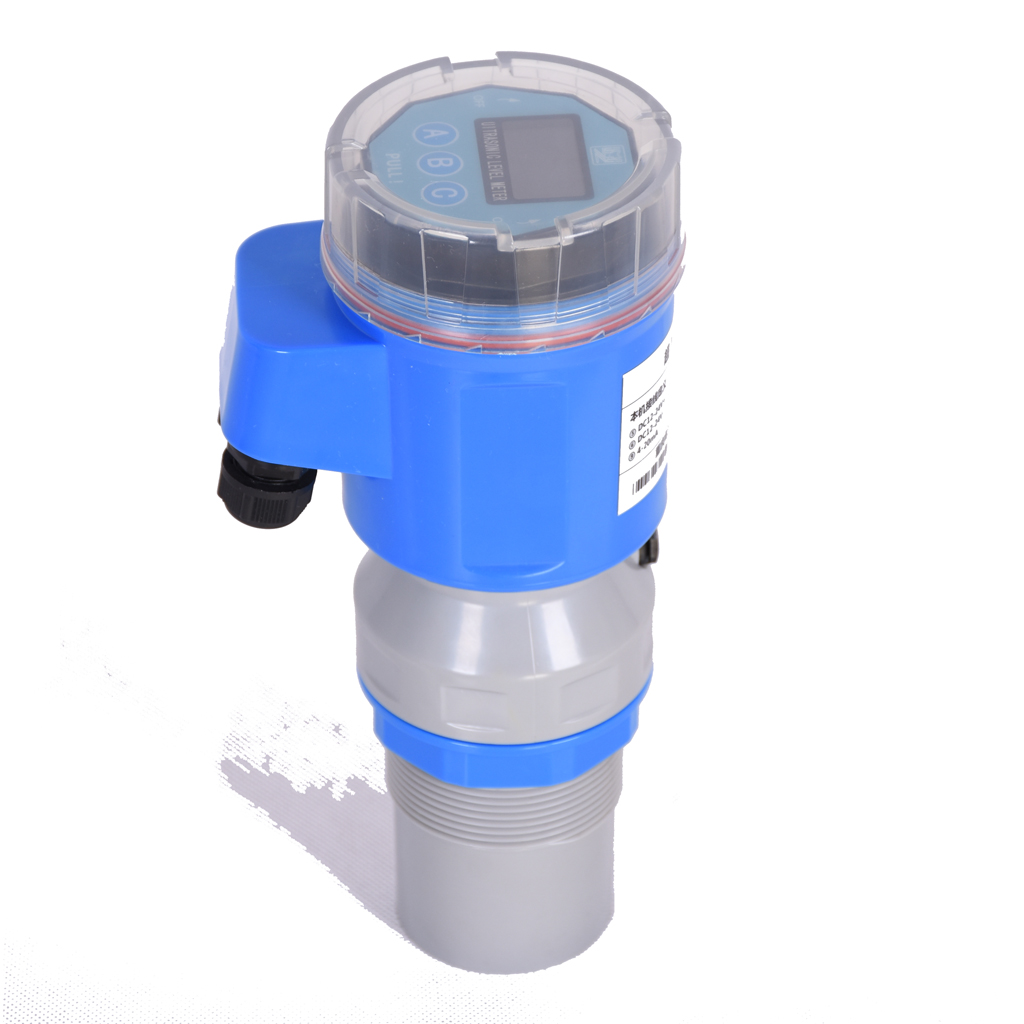The application of hydrostatic level sensor and level transmitters in industry
Abstract: The
hydrostatic level sensor is a
pressure sensor that measures the liquid level. Based on the principle that the static pressure of the measured liquid is proportional to the height of the liquid, an isolated diffusion silicon sensitive element or a ceramic capacitive pressure sensitive sensor is used to convert the static pressure. Converted into electrical signals, and then converted into standard electrical signals after temperature compensation and linear correction, generally suitable for liquid level measurement of various media in petrochemical, metallurgy, electric power, pharmaceutical, water supply and drainage, environmental protection and other systems and industries.
First, the measurement principle of the input liquid level gauge
The basic working principle of the hydrostatic level sensor is the hydrostatic level measurement, that is, the principle that the static pressure of the measured liquid is proportional to the height of the liquid. In a liquid medium, the pressure generated at a certain depth is generated by the weight of the medium above the measurement point. It is proportional to the density of the medium and the local acceleration of gravity. The proportional relationship between them is reflected by the formula P=ρGH. Where P=pressure, ρ=media density, G=gravitational acceleration, H=depth of measuring point.
sales01@cxflowmeter.com
hydrostatic level transmitters generally use the piezoresistive effect of diffused silicon or ceramic sensitive elements to convert static pressure into electrical signals. Temperature compensated and linearity corrected. Converted to 4-20mADC standard current signal output. The sensor part of the submersible liquid level transmitter can be directly put into the liquid, and the transmitter part can be fixed with a flange bracket, which is extremely convenient to install and use. Solid-state structure, no moving parts, high reliability, long service life High-precision measurement from water, oil to paste with high viscosity, not affected by foaming, deposition, electrical properties of the measured medium Wide range Temperature compensation. It also has power supply reverse polarity protection and overload current limiting protection.
Second, the characteristics of the submersible level gauge
The delicate structure of the submersible level gauge, simple adjustment and flexible installation provide convenience for users to use easily. The sensor with heavy anchor is suitable for liquid level measurement in petroleum, chemical, electric power and other industries.
The main advantages of the submersible level gauge are: high measurement accuracy; easy installation; signals can be transmitted remotely and remotely; it can resist the corrosion of various media by choosing different materials; it is suitable for explosion-proof occasions; the price is moderate. Good stability, long-term stability of full scale and zero position, not affected by foaming, deposition and electrical characteristics of the measured medium. It has reverse protection and current-limiting protection circuits. When the positive and negative poles are reversed during installation, the transmitter will not be damaged. When abnormal, the transmitter will automatically limit the current. Solid structure, no moving parts, high reliability, simple structure, economical and durable, long service life.
The disadvantages of the submersible level gauge are: the measurement signal needs to be converted; the temperature of the high temperature medium over 125°C cannot be measured; the density of the measurement medium must be uniform. After understanding the basic working principle of the submersible level transmitter, many people have little understanding of the main technical indicators of the submersible level transmitter.
Take a certain submersible level gauge as an example, its measurement range: 0.3~110m, accuracy: 0.2, 0.5, 1.0 grades, working temperature: -20~80℃, output signal: two-wire system 4~20mADC, power supply voltage: standard 24VDC, insensitive area: ≤±1.0%FS Load capacity: 0-600Ω, relative temperature: ≤85%. Protection class: IP68 Explosion-proof mark: ExiaⅡCT4-7.
Fourth, the application of the submersible level gauge
Submersible hydrostatic level gauges have standard protection against surge voltage, RFI, overvoltage and reverse polarity protection to ensure high reliability. At present, the bottom measurement of vertical metal cans is still in an offline state, that is, manual measurement is performed in an empty can state, and then the bottom volume increment is obtained by the formula given by the geometric measurement method. This method cannot realize automatic measurement, is time-consuming and labor-intensive, and has poor real-time performance. The submersible level gauge can make up for this deficiency. The submersible level gauge is a special kind of liquid level gauge. As we usually see, the liquid level gauge has a characteristic, that is, it can only measure some delicate or no flow rate liquids, but the submersible level gauge has a characteristic. The meter is capable of measuring the level of liquids with very fast flow rates. Therefore, it can be widely used for liquid level measurement in non-sealed occasions (open container).

1. Application case:
A coal chemical company has 9 submerged level gauges used in the circulating water plant to measure the liquid level in the pool under the cooling water tower of the circulating water, and 3 submerged level gauges are used in the sewage treatment plant to measure the liquid level in the sewage sump. . Three sets of submersible level gauges are used in the reclaimed water device, which are used to measure the liquid level of the reclaimed water recovery tank and the liquid level of the recovered water storage tank. Works well. Previously, ultrasonic level gauges were used, and the probes had condensation in summer and severe frost in winter, which affected the measurement and fluctuated greatly.
A sewage treatment plant of an iron and steel group provides an input liquid level gauge to monitor the liquid level of the sewage storage tank containing a large amount of acidic solution that needs to be purified. At the same time, there are a lot of iron filings floating in the medium. When installing, do not put the level gauge into the bottom of the tank, but suspend it at a position about 1M away from the bottom of the tank, and clean it regularly. Ensure that the probe is not buried in the bottom of the tank dirt, and keep the probe membrane clean.
The ship lock of the Yangtze River Channel Dam adopts an input liquid level gauge to monitor the upstream and downstream liquid levels of the gate to ensure the safety and stability of ships when passing through the gate. Specific application: Install a set of submersible liquid level gauges inside and outside the gate, and adjust the opening position of the gate through the speed of liquid level change inside and outside until the upstream and downstream water levels are the same. After the ship passes, the gate is closed to store water.
2. Comparison with other types of level meter
In the industrial field, to measure the liquid level, there are many other methods and principles besides the hydrostatic level measurement of the submersible level gauge.
Float level gauge is a method of measuring liquid level relying on the principle of buoyancy. Usually, the observer can read the height of the liquid level intuitively through the cooperation of the float ball and the scale. Advantages: Quick and intuitive readings; low price; easy installation. Disadvantages: low precision; installation is relatively limited by the shape and structure of the container; not suitable for highly corrosive and dangerous media; unable to realize remote transmission and adjustment.
The magnetic flap level gauge relies on the magnetic float installed inside the container to drive the magnetic flap outside the container to turn over to realize signal conversion and liquid level display. Advantages: fast and intuitive reading; low price; remote transmission and adjustment possible. Disadvantages: low precision; complicated installation; range limitation; relatively large installation volume.
The capacitive liquid level sensor measures the level of the liquid level by using the change of the capacitance value between the two polar plates of the capacitor. Advantages: Small in size, easy to realize remote transmission and adjustment; suitable for corrosive and high-pressure media. Disadvantages: The dielectric constant of the medium and the upper part of the liquid surface must be kept constant for accurate measurement; the measurement range is limited by the length of the metal rod; there are high requirements on the material of the container; the measured medium has conductivity.

The radar level gauge converts the position of the object surface by detecting the microwave (electromagnetic wave with a very short wavelength) emitted by itself and reflected by the liquid surface. Advantages: It can measure the liquid level in the pressure vessel, and can ignore the effects of high temperature, high pressure, scaling and condensate; high precision; no direct contact with the medium; strong corrosion resistance; can be used in a vacuum environment; easy installation. Disadvantages: expensive; affected by vessel geometry and material properties; susceptible to electromagnetic interference.
The ultrasonic liquid level gauge converts the position of the object surface by detecting the signal of the ultrasonic wave emitted by itself after being reflected by the liquid surface. Advantages: no direct contact with the medium; strong corrosion resistance; high precision; easy installation. Disadvantages: The price is relatively expensive; the ultrasonic wave is greatly affected by the gas composition of the transmission medium; it is greatly affected by the geometric structure of the container; it is not suitable for the medium with bubbles or suspended matter;
3. Installation Precautions
The installation environment of the instrument should meet the requirements, and it should be avoided as much as possible to install it in an environment with severe vibration, strong heat source and a large number of corrosive media. When the measuring head is installed, check that it can be equipped with a stabilizer. Because the stabilizer is heavy, the air-conducting cable between the clamp and the measurement should not be stressed during assembly to prevent the air-conducting cable joint from loosening and leaking.
If you want to know more about sensor parameters and quotation, please contact winny: sales01@cxflowmeter.com




